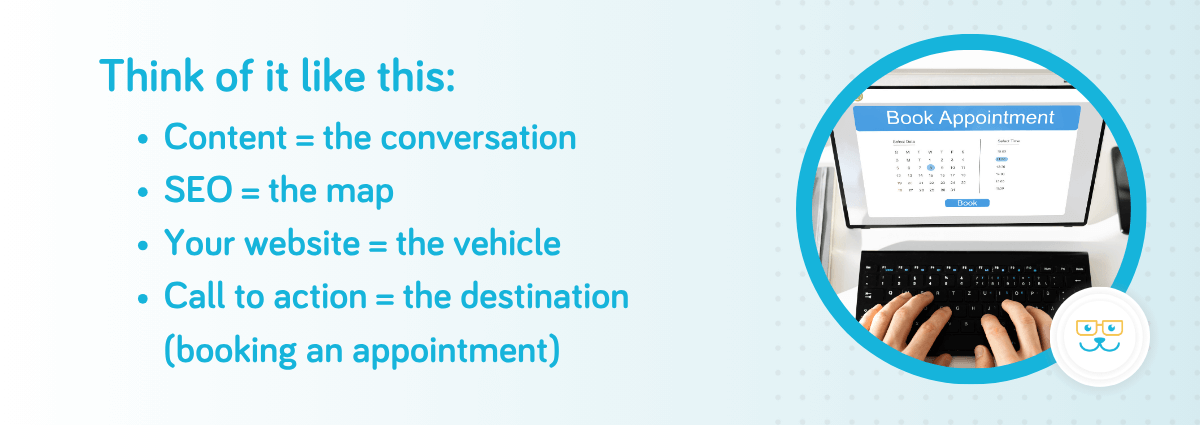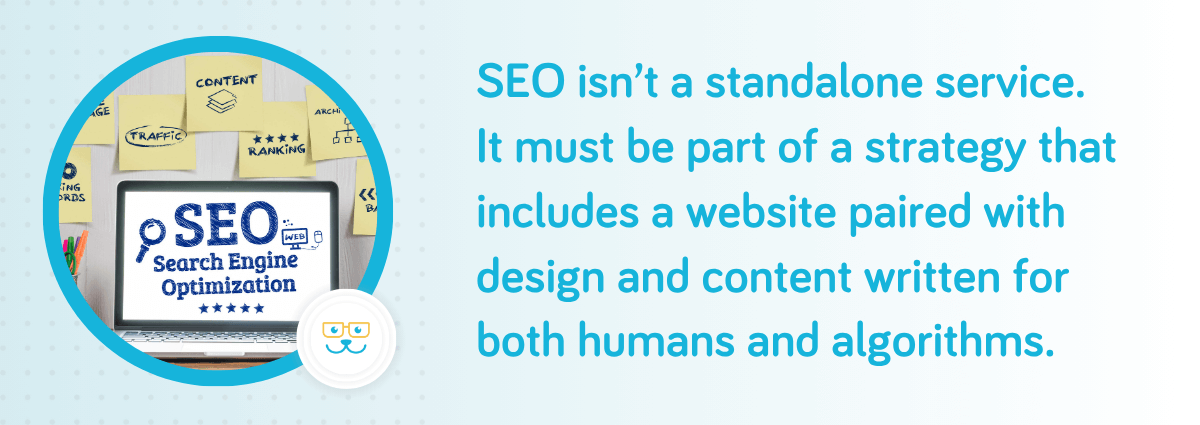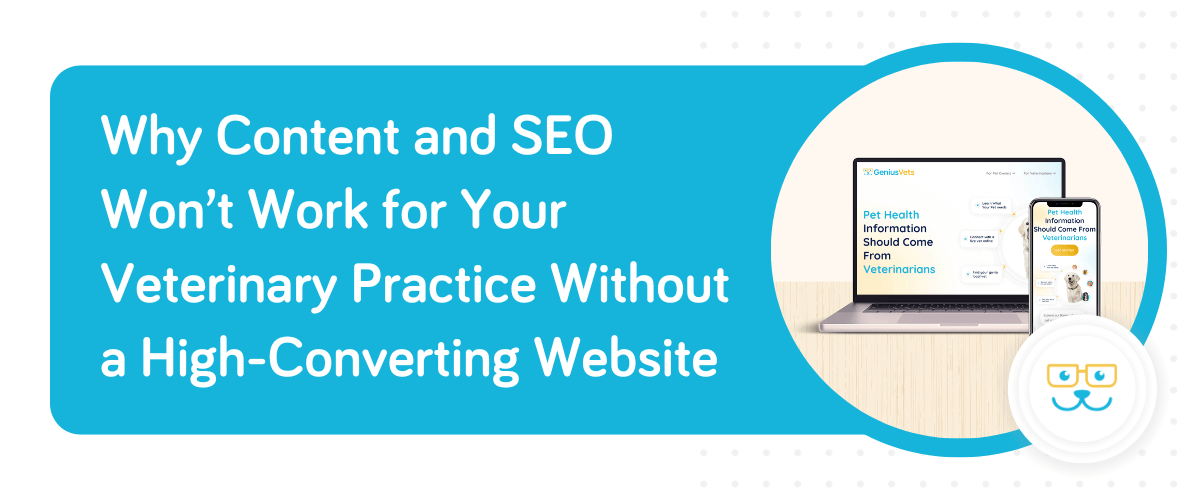Why Content and SEO Won’t Work for Your Veterinary Practice Without a High-Converting Website
You’ve blogged. You’ve posted. You’ve packed your pages with all the right keywords and optimized every sentence for Google. You’re showing up in more search results and maybe even earned a few compliments on your latest blog about dog allergies.
So… why aren’t your appointment requests going up?
Ready for the answer? Even the most informative blog post and perfectly optimized page won’t get the job done if your website isn’t set up to convert. As a veterinary professional, you already know that outcomes depend on the full treatment plan, not just a single dose. Digital marketing is no different.

In other words? You can’t just attract visitors, you have to convert them. Your content and Search Engine Optimization (SEO) efforts are only as strong as the website they live on.
Let’s break down why your content and SEO need a high-performing website to back them up, and how to tell if your current site is secretly sabotaging your growth.
Don’t Waste Good SEO and Killer Content on a Bad Website
Let’s break down this strategy. SEO drives traffic to your website. Content builds trust and solves problems. But it’s your entire website, from the coding to images to proper structure that converts attention into action.
Think of it like this:
Content = the conversation
SEO = the map
Your website = the vehicle
Call to action = the destination (booking an appointment)

If your website is outdated, confusing, or slow, no one’s sticking around, no matter how good the conversation or how accurate the directions.
3 Big Problems We See with Veterinary Websites
Before we get into how to optimize your site, let’s look at what’s failing veterinary practice sites even when content and SEO are on point.
1. The User Experience is Clunky & Not Mobile-Friendly
If your website loads slower than a senior pug on a summer walk, you’ve already lost. Google penalizes slow sites, pet parents leave, and nothing says “outdated” like a site that still looks like it was built in 2010.
Pet parents want to click, call, and book, not hunt through dropdown menus or pinch and zoom just to find your location and phone number. With over 60% of local searches happening on mobile, your site has to be fast, intuitive, and thumb-friendly, or you’re sending potential clients straight to your competitors.
2. There’s No Clinical Connection
Does your website reflect the same level of trust and expertise you provide in the exam room? Or does it sound like it was outsourced to ChatGPT? Pet parents are making decisions in seconds. If your site doesn’t communicate medical authority and real personality, they’ll move on.
Genius Tip: Feature doctor bios with credentials, team photos, and real stories from your practice. Use your blog to demonstrate clinical knowledge in a compassionate, client-friendly voice.
3. There’s No Clear Call to Action
It’s shocking how many veterinary websites fail to guide the visitor to do the one thing that actually matters: book an appointment. If your site doesn’t make that process obvious, easy, and fast, it’s leaking opportunity. Nothing makes life easier than a call-to-action button that directs viewers to take action right now, just like you should book a marketing health exam...
The Disconnect You Might Not Realize You Have
Here’s a common scenario we see:
You hire someone to “do SEO.” They optimize a few pages, post a blog about heartworm prevention, and send you a traffic report that looks great on paper.
But they never told you that your traffic isn’t converting because your site has:
- No internal links
- Zero CTA strategy
- Outdated design
- Confusing navigation
- A generic tone that doesn’t reflect your practice’s culture
SEO isn’t a standalone service. It must be part of a strategy that includes a website paired with design and content written for both humans and algorithms. Otherwise, you’re pouring water into a leaky bucket.

What Does a High-Converting Vet Website Actually Include?
Let’s be clear: a high-performing veterinary website isn’t just a pretty face. It’s a 24/7 team member that educates, builds trust, captures leads, and books appointments while you’re in surgery or catching up on SOAP notes.
And while it’s tempting to focus on flashy animations, looping videos, or the latest design trends, none of that matters if the site doesn’t perform where it counts: search rankings, usability, and conversion.
A truly effective veterinary website is rooted in strategy. It’s built to serve both the pet owner and the practice. Here’s what it needs:
- Fast, mobile-first performance
- Strategic content that matches what pet owners are actually searching for
- Clear, compelling CTAs that guide action
- Logical site structure that mirrors your services
- On-brand design that builds clinical trust
- ADA compliance & HIPAA-aware forms
- SEO integration at every level: title tags, meta descriptions, alt text, schema, and more
From mobile-first functionality to search-intent-driven content, every piece must pull its weight in the client acquisition journey.
Ready to Turn Traffic Into Clients?
When SEO, content, and website design work in harmony, your website becomes more than just a digital brochure, it transforms into a client-converting, revenue-driving machine. Don’t let outdated design or clunky navigation hold your practice back. Schedule your FREE Marketing Health Exam and get a personalized report on how to turn your site into your #1 new client generator.
Book Your Complimentary Marketing Health Exam
Want more tips like this every week?
Subscribe to the GeniusVets Weekly Newsletter and get fresh insights, free resources, and veterinary marketing strategies delivered straight to your inbox.

